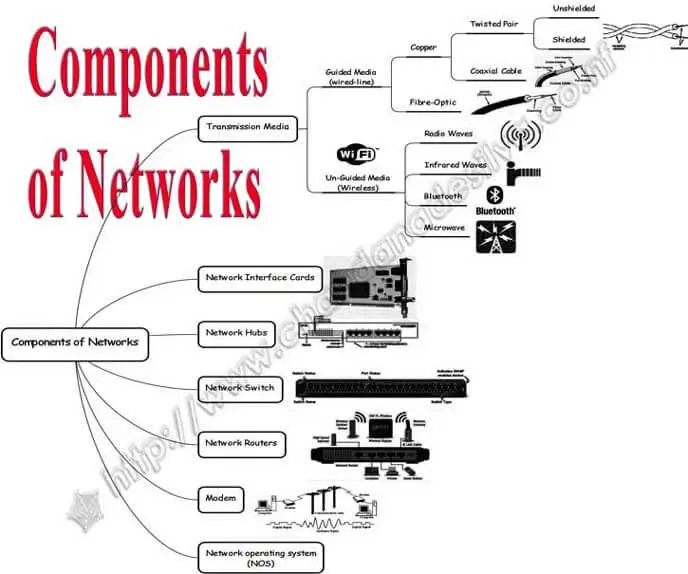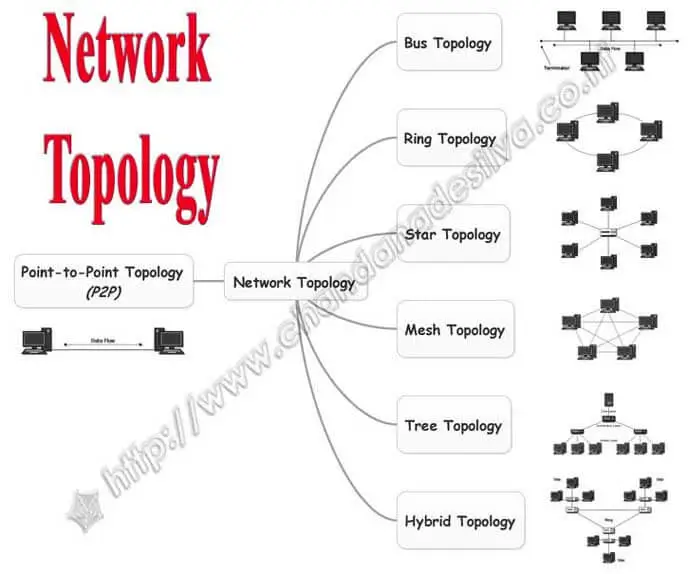AI Powered Abbreviations Search Bot
Retaining information in memory
Retaining information in memory
Learning is a complex process, and different methods can be used to retain information in the memory. These methods include lectures, reading, audiovisuals, demonstrations, discussions, practise, and teaching. Among these, teaching, practising and discussions are the most effective methods for retaining information. Teaching has the highest retention rate of 90%.

Components of the Networks
Establishing a network requires a set of major components that can range from simple to complex. These components are essential for ensuring that the network functions properly and that data are transmitted efficiently. From hardware elements to communication lines, each component plays a critical role in the network’s overall performance.

Types of Computer Networks
Networks come in various shapes and sizes, and they can be categorised in different ways based on their design, size, and interconnection methodology. Depending on these factors, networks can be categorised into different types. Understanding the various categories of networks is crucial for determining the appropriate setup for your needs.

Network Topology
Network topology refers to the arrangement of computer systems or devices that are interconnected or linked to each other with communication lines, such as network cables, and hardware elements, such as network adapters, to ensure that data are accurately transmitted. Topologies can define both the physical and logical aspects of the network, and they can be the same or different. There are different types of network topologies, and each type has unique characteristics that make it suitable for particular applications.
The definition of "Computer" has evolved over time, from counting devices and adding machines to vacuum tubes, transistors, and integrated circuits (IC), and finally to microchips or microprocessors. Today, we have advanced technologies like Artificial Intelligence (AI) have transformed the world of computing.
AI technology enables machines to perform tasks that would normally require human intelligence, such as learning, reasoning, and problem solving. With the help of AI, computers can now understand natural language, recognise images and sounds, and make decisions based on data analysis.
Before 1935, a computer was a "job title" for a person who performed arithmetic calculations. However, by 1945, the term “computer” referred to a "machine" rather than a person.
The modern machine definition is based on Von Neumann’s concepts and is referred to as a "General Purpose Device", which accepts input, processes data, stores data, and produces output. Today, computers are used for various purposes, from simple calculations to complex simulations, data analysis, and AI applications.
Currently, the definition of a computer often includes "Interactive Thinking Machines" or "Smart Devices" reliant on sensors capable of interacting with human beings. With the advancement of AI technology, we can anticipate computers becoming even more intelligent and proficient at performing increasingly complex tasks.
In today’s interconnected world, access to technology is no longer a luxury but a necessity, particularly in the realm of education. However, as our society becomes increasingly digitised, a stark reality emerges: not everyone has equal access to the tools and resources offered by technology. This phenomenon, known as the digital divide, poses significant challenges to educational equity and opportunity. In this article, I explain the concept of the digital divide, its causes and consequences, and why bridging this gap is crucial for ensuring a fair and inclusive education system.
Thesis Statement
The digital divide presents a formidable barrier to educational equity, perpetuating disparities in academic achievement and limiting opportunities for socioeconomically disadvantaged students. Addressing this divide is imperative to foster a more equitable and inclusive learning environment that empowers all students to reach their full potential.
Understanding the Digital Divide
The digital divide refers to the gap between those who have access to modern information and communication technologies (ICT), such as the internet, computers, and smartphones, and those who do not. This gap is not merely about access to hardware and connectivity but also encompasses disparities in digital literacy and skills. It manifests in various forms, including discrepancies between urban and rural areas, socioeconomic inequality, and differences in educational attainment.
Impact on Education
The implications of the digital divide for education are profound and multifaceted. Students lacking access to technology face numerous obstacles in their academic journey. They struggle to complete homework assignments, conduct research, and participate in online learning platforms. Consequently, these students often fall behind their peers, perpetuating a cycle of underachievement and missed opportunities. Moreover, the digital divide intensifies existing inequalities, disproportionately affecting marginalised communities and perpetuating socioeconomic disparities in educational outcomes.
Addressing the Divide
To tackle the digital divide effectively, concerted efforts are needed at both policy and grassroots levels. Governments must prioritise investment in infrastructure and digital literacy programmes to ensure universal access to technology. Educational institutions should implement inclusive strategies to accommodate students from diverse backgrounds, providing them with the support and resources they need to thrive in a digital learning environment. Additionally, partnerships between the public and private sector can play a pivotal role in bridging the gap, leveraging technology to deliver educational content to underserved communities.
Was your mobile phone imported with proper approval by the Telecommunications Regulatory Commission of Sri Lanka or illegally smuggled into the country?
To find out, follow these steps:
Step 1: Get the IMEI Number of your mobile phone. Dial *#06# on your phone’s keypad to view the IMEI number on your screen.
Step 2: Send your mobile phone’s IMEI number to the TRC for free verification by typing "IMEI [space] 15 digit IMEI number" and sending an SMS to 1909.
Textbook Assignments for HTML-5
Useful Web Links
AI Tools
Free App Downloads
Customary
YouTube Links

